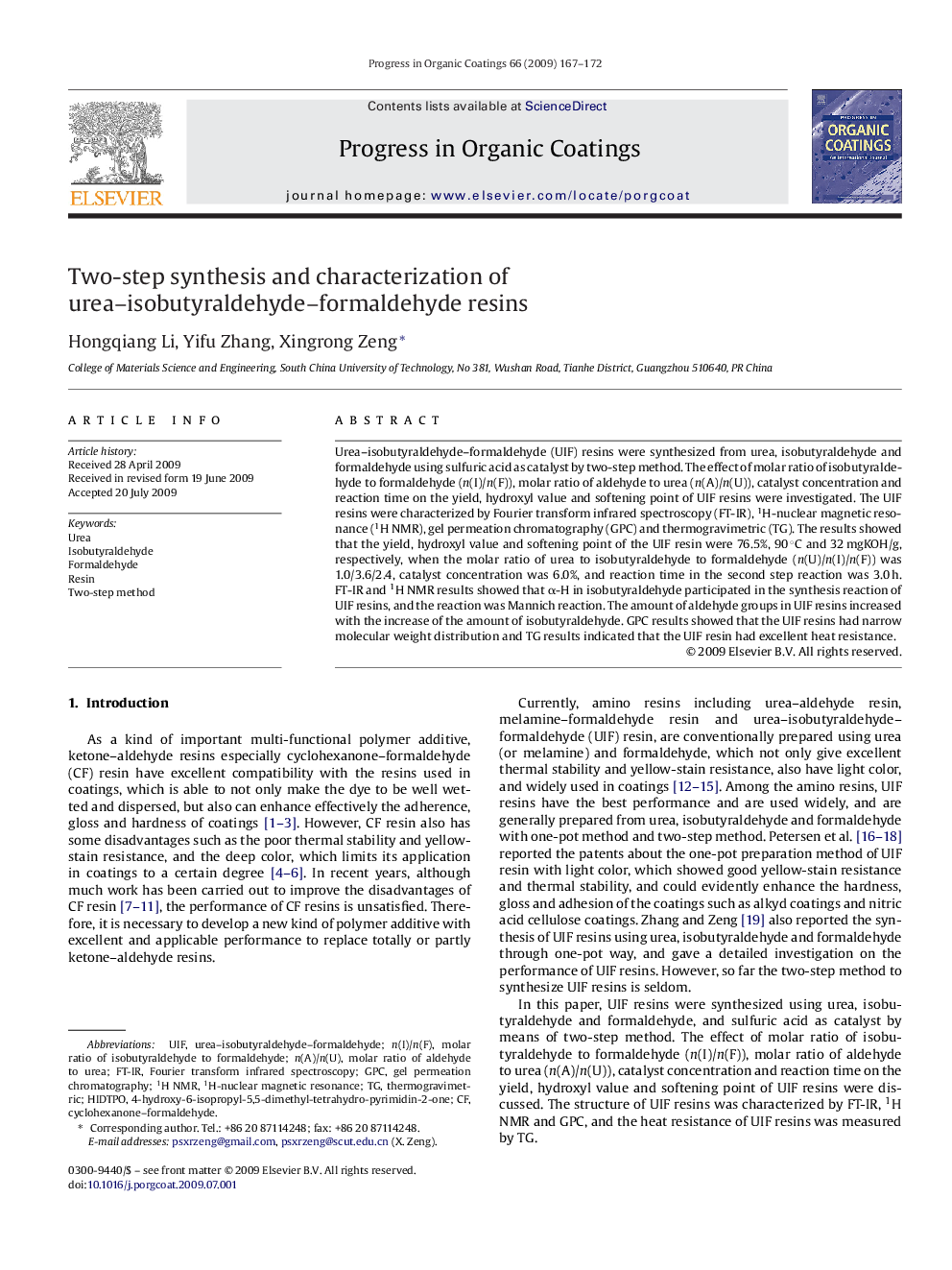| Article ID | Journal | Published Year | Pages | File Type |
|---|---|---|---|---|
| 693414 | Progress in Organic Coatings | 2009 | 6 Pages |
Urea–isobutyraldehyde–formaldehyde (UIF) resins were synthesized from urea, isobutyraldehyde and formaldehyde using sulfuric acid as catalyst by two-step method. The effect of molar ratio of isobutyraldehyde to formaldehyde (n(I)/n(F)), molar ratio of aldehyde to urea (n(A)/n(U)), catalyst concentration and reaction time on the yield, hydroxyl value and softening point of UIF resins were investigated. The UIF resins were characterized by Fourier transform infrared spectroscopy (FT-IR), 1H-nuclear magnetic resonance (1H NMR), gel permeation chromatography (GPC) and thermogravimetric (TG). The results showed that the yield, hydroxyl value and softening point of the UIF resin were 76.5%, 90 °C and 32 mgKOH/g, respectively, when the molar ratio of urea to isobutyraldehyde to formaldehyde (n(U)/n(I)/n(F)) was 1.0/3.6/2.4, catalyst concentration was 6.0%, and reaction time in the second step reaction was 3.0 h. FT-IR and 1H NMR results showed that α-H in isobutyraldehyde participated in the synthesis reaction of UIF resins, and the reaction was Mannich reaction. The amount of aldehyde groups in UIF resins increased with the increase of the amount of isobutyraldehyde. GPC results showed that the UIF resins had narrow molecular weight distribution and TG results indicated that the UIF resin had excellent heat resistance.
